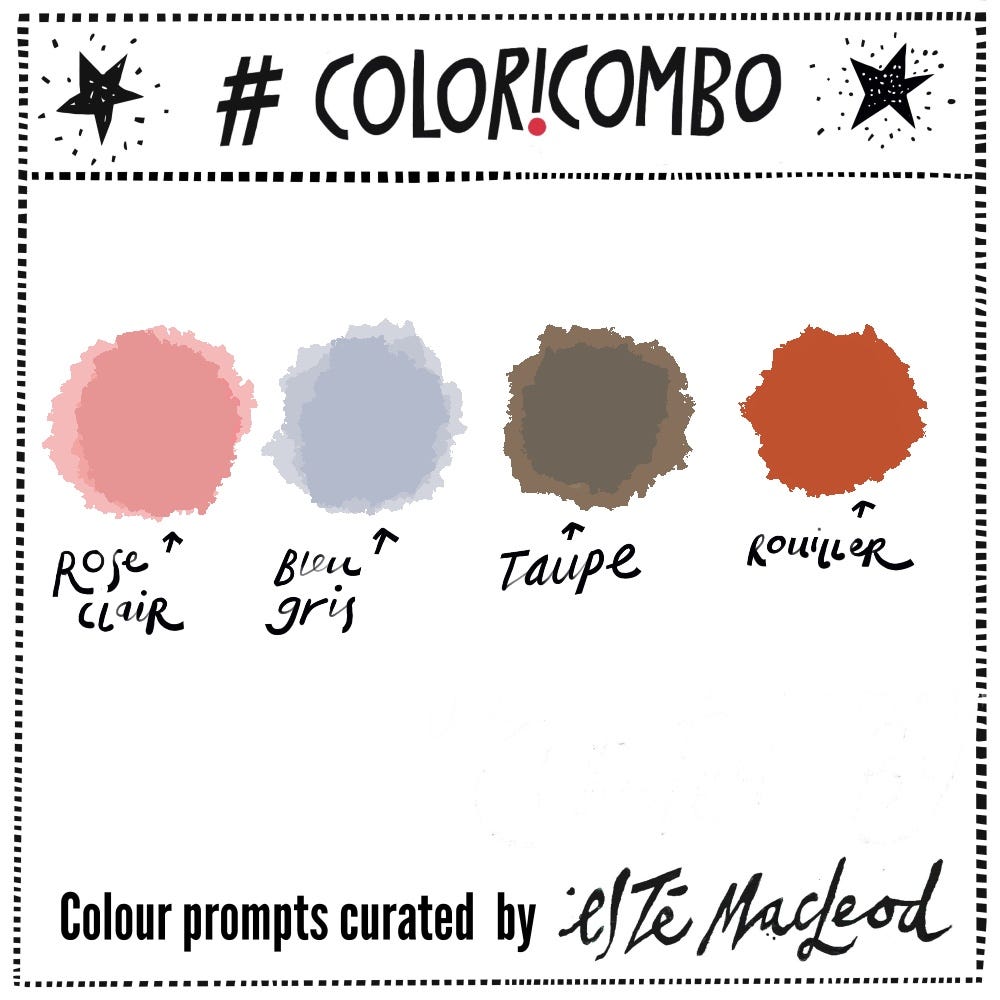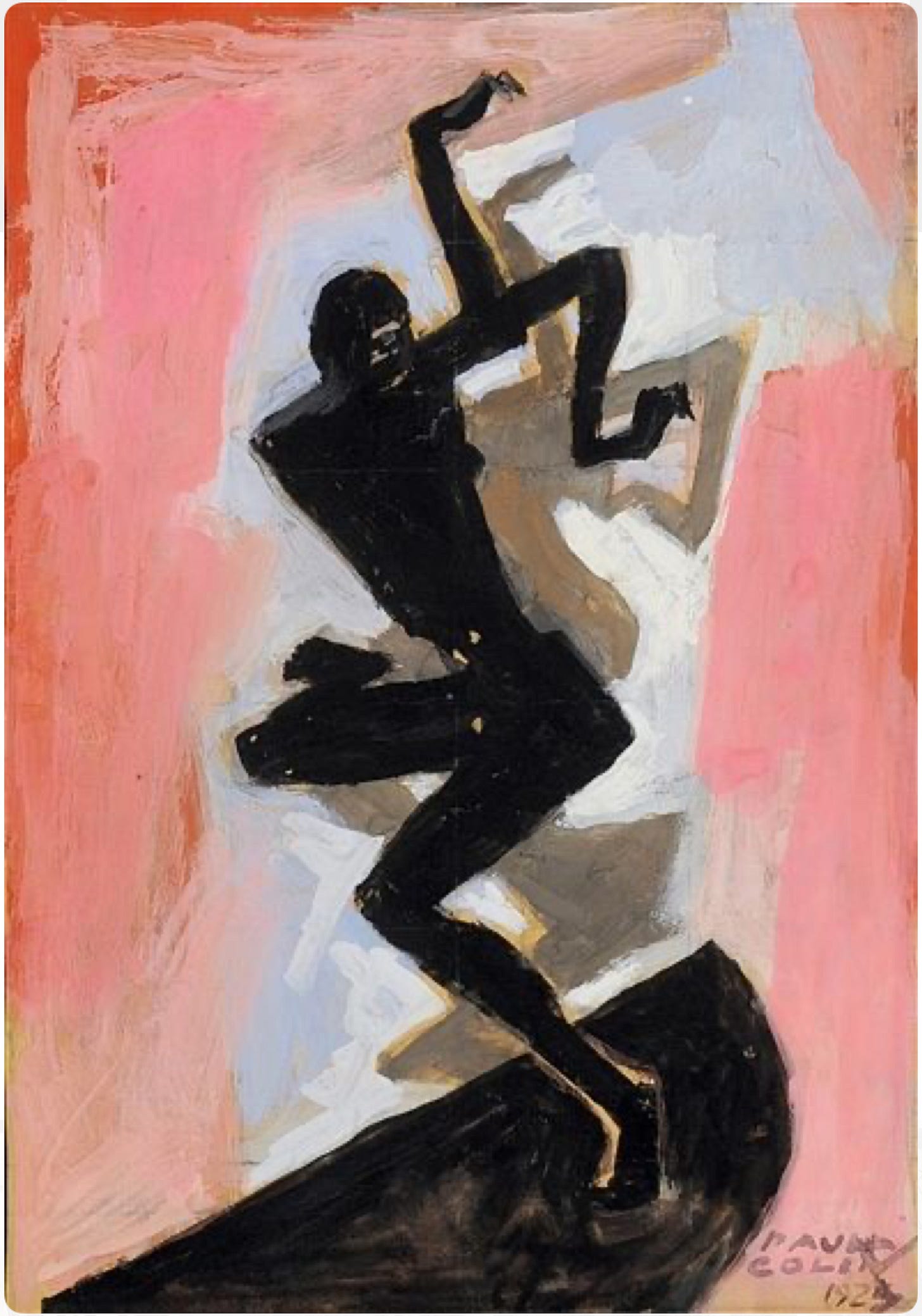The Château des Milandes
Week 37's colours are Rose Clair, Bleu Gris, Taupe and Rouiller
Coloricombo is coming to you from the Dordogne in France this week where I am guiding the art program on a retreat facilitated by the fabulous people at Perigord Retreats. We’ve been treated to daily visits to beautiful medieval towns and other amazing sights around the Perigord region of the Dordogne Valley.
A few days ago we travelled to the Château des Milandes, once the home of an extraordinary woman: Josephine Baker. Born into poverty in St. Louis, Missouri, she was a groundbreaking dancer, singer and civil rights activist who is also recognised for her role as a spy whilst working with the French Resistance during World War II.
Twice married before she was sixteen, Baker (1906-1975) worked as a waitress before getting accepted into the local vaudeville act. She toured with them and soon made the leap to New York, appearing in the chorus line on numerous Broadway shows. In 1925 her dance company toured Europe and in 1926 she broke her contract with them, moving to Paris to join the Folies Bergère. It was there that she gained fame and acceptance in her own right, partly due to her energetic performances including one where she wore a skirt made entirely of fake bananas (which is on display at the chateau).
During World War II, at the start of the German occupation of France, Baker left Paris and moved to the Dordogne region, to the 15th century Château des Milandes which became the hub for the local Resistance, even housing a radio transmitter. Baker used her celebrity status to gather intelligence whilst performing and attending high society events and reported anything of interest back to the Resistance and to the British Secret Intelligence Service, earning her both the Légion d'honneur and the Croix de Guerre from General de Gaulle.
After the war Baker and her husband purchased the chateau and settled down, adopting twelve children of different nationalities and ethnic backgrounds which she called her Rainbow Tribe.
Baker returned on occasion to America during the 1950s. There she refused to appear in front of racially segregated audiences and became involved in the Civil Rights Movement. She spoke at the March on Washington alongside Martin Luther King and after his assassination was encouraged by Coretta Scott King to take over the leadership role, which she declined saying her children were ‘too young to lose their mother’.
Financial difficulties forced the sale of the chateau in 1968 and it was purchased in 2001 to create a museum in Baker’s honour. It’s now open to the public and stands as a beautiful example of Renaissance architecture and as a memorial to an extraordinary woman’s life.
I’d encourage you to read more about Josephine Baker here and here. For a brief video documentary of her life, including some great early footage, go here. Finally you can find out more about the chateau here.
Today’s colours are taken from a poster by Paul Colin (1892-1985) depicting Baker in full movement. Colin was a professional artist and graphic designer and, with almost two thousand credited works, one of the most important French poster artists of the 1920s and 1930s. Many of his famous illustrations were produced during the Jazz Age, the time that Baker was rising to fame and he would have known her from the Folies Bergère, for whom he frequently designed new posters. Read more about Colin here.
‘Joséphine Baker, la Revue Nègre’, gouache on paper, Paul Colin, 1925
Colour Combination
The colours this week are Rose Clair, Bleu Gris, Taupe and Rouiller. Use the colours along with a contrasting dark and neutral light colour if you wish. Create an artwork in any medium or style.
I love seeing what you create. If you’re posting on Instagram, please tag #coloricombo and #estemacleod and join us in the private Facebook group Creative Prompts.





Great story, great palette 😍
Fascinating life! I had only heard of her in the capacity of dance/performer. WOW, so much more to her-story.